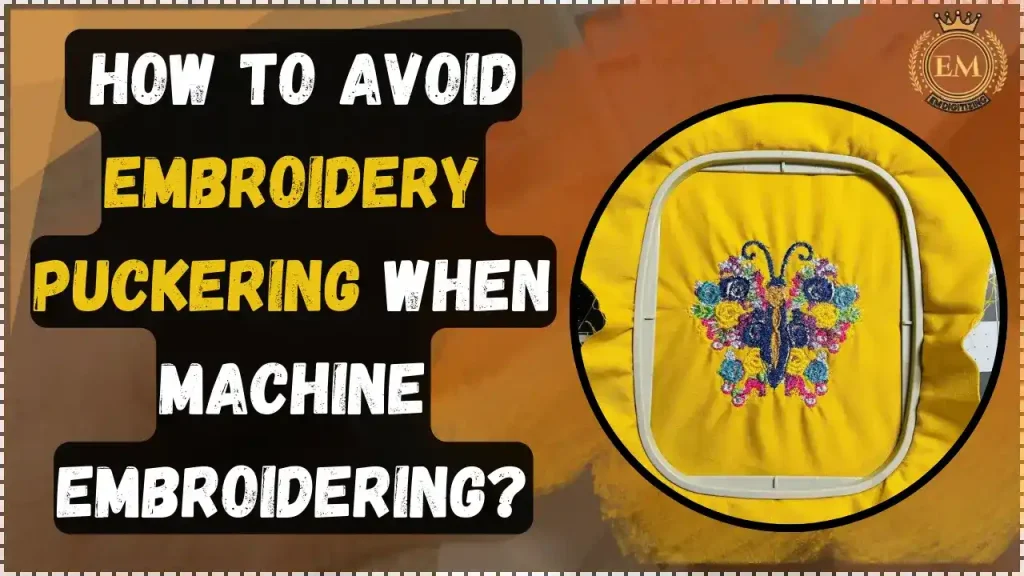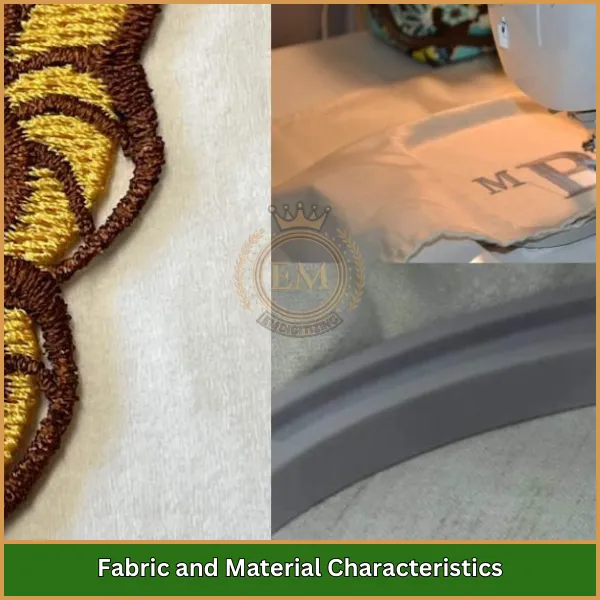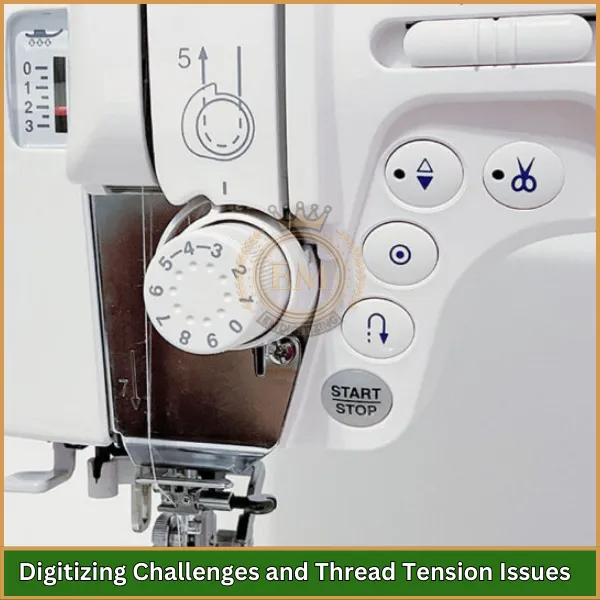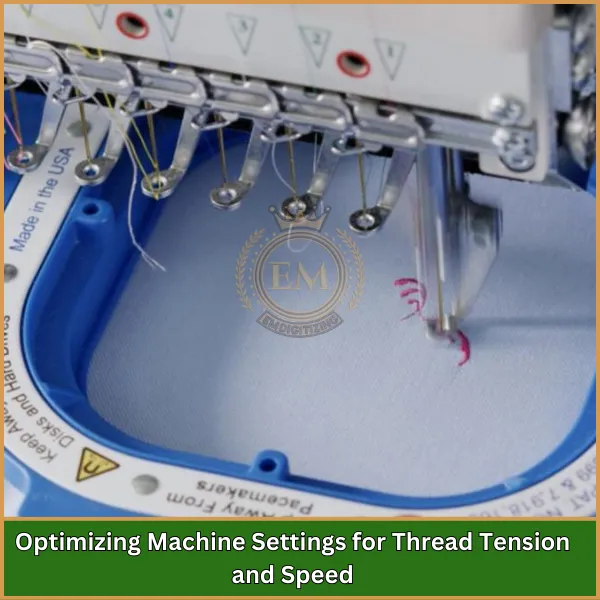Are you tired of dealing with embroidery puckering when you’;Refraction sur vos projets de broderie de machine?
Il peut être frustrant de voir que tout votre travail acharné est gâté par les plis dans le tissu. But don’;ne t'inquiète pas! I’;m ici pour vous aider à comprendre pourquoi le plissier se produit et comment l'empêcher.

À la fin de ce guide, you’;auront les connaissances et les conseils dont vous avez besoin pour garder votre broderie en douceur et professionnelle à chaque fois.
Let’;S plongez et abordez ce défi de broderie commun ensemble!
Comment éviter les plis de broderie lors de la broderie à la machine?
Comprendre les plis de broderie
Le pliniture dans la broderie se produit lorsque le tissu autour de vos points, Rendre votre design par bosse ou inégal. It’;est comme lorsque vous tirez une nappe, et des parties de celui-ci se rassemblent; something similar happens with fabric when you’;rebroder.
Ce problème peut rendre votre belle broderie moins bien rangée et professionnelle.
Pourquoi le pliniture se produit-il?
Puckering usually happens because the fabric moves around too much when you’;REMORIEZ-LE.
If the fabric isn’;t held tightly enough or if it’;est une sorte qui glisse facilement, il peut se regrouper sous l'aiguille.
Imagine trying to write on a piece of paper that keeps slipping away—it’;Il est difficile de garder votre écriture soignée, droit? It’;est la même avec la broderie.
Types de tissus qui pourraient se plissier
- Tissus glissants: Les matériaux comme le satin ou le nylon sont lisses et peuvent glisser facilement, ce qui les rend difficiles à broder sans se plier.
- Tissus légers: Matériaux minces, comme le lin ou le coton, peut aussi se rider facilement parce qu'ils ne sont pas très lourds.
- Tissus extensibles: Tissus qui s'étendent, comme ceux utilisés dans les t-shirts, peut se retirer de forme lorsque vous les broder, surtout s'ils rebondissent en forme après les avoir relâchés cercle à broder.
Causes courantes de pli de broderie
Le pli peut gâcher l'apparence fluide de votre broderie, rendre important de comprendre ce qui les cause. Voici un aperçu détaillé de la raison pour laquelle cela se produit et comment vous pouvez repérer les suspects habituels qui mènent à un pli.
- Caractéristiques du tissu et du matériau
- Erreurs de désalignement et de sélection du stabilisateur
- Numérisation des défis et des problèmes de tension du fil
Caractéristiques du tissu et du matériau

La type de tissu Vous utilisez joue un grand rôle dans la probabilité que il est probable que. Some fabrics just don’;t handle embroidery well because they’;soit trop extensible, trop mince, ou trop glissant.
Par exemple, if you’;Travail avec un tissu glissant comme le satin, il peut trop se déplacer sous l'aiguille. De la même manière, Des tissus légers comme la mousseline peuvent se rassembler car ils ne peuvent pas bien gérer la tension.
Chaque type de tissu a ses propres besoins, Il est donc crucial de choisir le bon pour votre projet pour maintenir la qualité de la broderie.
Erreurs de désalignement et de sélection du stabilisateur

Un stabilisateur prend en charge votre tissu pendant la broderie, aider à le garder à plat et en place. Si le stabilisateur n'est pas correctement choisi ou aligné, Votre tissu peut se déplacer ou s'étirer pendant que vous brodez. Ce désalignement peut entraîner le regroupement du tissu, conduisant à un pli.
C'est comme mettre la mauvaise base sous une maison; Si ce n'est pas juste, Les choses peuvent devenir bancantes.
Choisir le bon stabilisateur pour votre tissu et vous assurer qu'il est correctement appliqué sont des étapes clés pour prévenir la broderie de la machine.
Numérisation des défis et des problèmes de tension du fil

La façon dont votre conception de broderie est créé dans le logiciel de numérisation peut également conduire à un pli. Si la conception est trop dense ou si le chemin de couture n'est pas optimisé pour votre type de tissu, Le tissu peut être tiré trop étroitement pendant les cerceaux de broderie.
Cette tension du fil lorsqu'il tire à travers le tissu peut provoquer un pli. Il est essentiel que votre conception soit numérisée avec le tissu spécifique à l'esprit, Considérer des facteurs comme la longueur et la densité des points.
Solutions complètes pour empêcher la broderie de pli
Pour obtenir des conceptions de broderies lisses et professionnelles, Il est crucial de mettre en œuvre des stratégies efficaces qui traitent des causes communes du pli.
Voici un guide des solutions complètes qui peuvent vous aider à empêcher ce problème
- Sélection du stabilisateur approprié
- Techniques de préparation de tissu et de cerceau appropriées
- Conseils de numérisation avancés pour réduire la densité et l'ajustement de la sous-couche
- Optimisation des paramètres de la machine pour Tension du fil et la vitesse
Sélection du stabilisateur approprié
Le bon stabilisateur forme l'épine dorsale d'une broderie réussie en soutenant le tissu pendant le processus de couture. Choisir un stabilisateur qui correspond au poids et à l'étirement de votre tissu est essentiel.
Par exemple, use a cut-away stabilizer for stretchy materials to prevent the fabric from moving and a tear-away for more stable fabrics that don’;t étirer. Cela garantit que le tissu reste lisse et soutenu, Minimiser les chances de pli.
Techniques de préparation de tissu et de cerceau appropriées

Préparer correctement votre tissu avant de commencer peut réduire considérablement le risque de pli. Première, Assurez-vous que le tissu est correctement allongé et exempt de rides. Quand Hooping, le tissu doit être tendu mais pas surclacé.
It’;est comme la peau de tambour; Il doit être assez serré pour rebondir lorsqu'il est légèrement tapé. Cet équilibre aide à maintenir une tension uniforme tout au long du processus de broderie, Empêcher le tissu de se rassembler autour des points.
Conseils de numérisation avancés pour réduire la densité et l'ajustement de la sous-couche

La façon dont un fichier de broderie est numérisé peut avoir un impact significatif sur le résultat final. Pour éviter de grignoter, Réduisez la densité des points dans votre conception, surtout lorsque vous travaillez avec des tissus légers ou délicats. En outre, L'ajustement de la sous-couche peut aider à stabiliser le matériau.
Une sous-ligne agit comme une fondation, Maintenir le tissu vers le bas et le lisser avant l'application des points supérieurs. Les paramètres de sous-couche appropriés peuvent empêcher le tissu d'être tiré trop étroitement par les points.
Optimisation des paramètres de la machine pour la tension et la vitesse du thread

L'ajustement des paramètres de votre machine à broder est crucial pour prévenir. La tension du fil doit être réglée de sorte qu'elle n'est ni trop serrée ni trop lâche; Les deux extrêmes peuvent provoquer le plit du tissu. Aussi, Envisagez de réduire la vitesse de la machine à broder.
Une vitesse plus lente permet un placement de point plus précis et réduit la contrainte sur le tissu, ce qui peut aider à maintenir la qualité de la broderie et à empêcher le pli.
Conclusion: Assurer des résultats de broderie lisses et professionnels
We’;Ve a parlé de la façon d'arrêter la broderie et de vous assurer que votre projets de broderie avoir l'air bien et lisse. Rappelles toi, pour obtenir les meilleurs résultats, Vous devez utiliser le support droit, Assurez-vous que votre tissu est mis dans le cerceau juste à droite, et définissez correctement votre machine à broder.
If you’;Recherche d'une aide experte pour tirer le meilleur parti de vos conceptions de broderie, notre services de numérisation à EMnumérisation sont là pour vous aider. Nous offrons des délais d'exécution rapides, prix abordable, et des résultats de haute qualité qui augmenteront vos projets de broderie.
Plus, if it’;s votre première fois en utilisant nos services, vous obtenez 50% désactivé! C'est une excellente occasion de voir comment l'aide professionnelle peut rendre vos créations parfaites à chaque fois.
Alors$£€¥789/456*123-0.=+_çàiopjkln,;:! ذ ضِ ئ, Ne vous inquiétez plus pour le pâte - laissez-nous vous aider à faire de chaque projet un succès!
FAQ
Embroidery can pucker after being washed if there’;s trop de tension pendant les coutures ou pas assez de stabilisateur a été utilisé. Quand tu le lavez, the fabric might change shape because it wasn’;t correctement pris en charge pendant le processus de broderie.
Pour lisser la broderie plissée, Commencez par poser l'élément brodé face vers le bas sur une surface plane. Brume légèrement avec de l'eau. Alors, Étirez doucement le tissu jusqu'à ce qu'il pose à plat. Cette méthode aide à détendre les fibres et à réduire le pli.
Le pli de la broderie peut se produire pour plusieurs raisons, y compris ne pas cerceau correctement le tissu, n'utilise pas suffisamment de stabilisateur, mauvaise numérisation, ou avoir la tension du fil trop serrée. Souvent, plissé est également causé par dessins qui sont trop denses ou qui ont trop de points emballés dans une petite zone, ce qui met beaucoup de stress sur le tissu.
